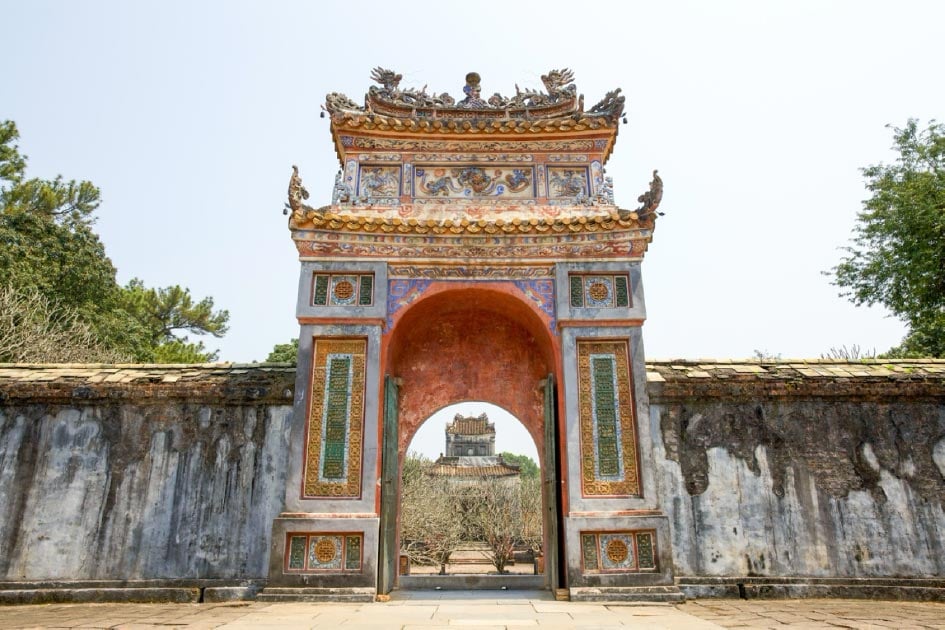The Buried Secret of Tu Duc’s Tomb, Vietnam
Vietnam was ruled by many emperors during its long and turbulent history. Emperor Tu Duc, one of the longest-reigning monarchs in the nation’s history, constructed a tomb complex which is truly remarkable, and he has left us with a great mystery.
Tu Duc was born Prince Nguyen Phuoc Hoang Nham in 1829 and chose Tu Duc as his reigning name when he succeeded his father in 1847. He was a member of the Nguyen Dynasty and attempted to keep Vietnam isolated from the rest of the world in order to maintain its freedom.
The Bloody History of Tu Duc’s Tomb in Vietnam
Tu Duc, who reigned for 36 years, resisted French colonists and as part of his anti-western stance, persecuted Christian missionaries. He attempted to steer a middle course between China and France who both sought to dominate the country. The French defeated the Vietnamese army after they bravely defended their country and went on to conquer all of Vietnam after they defeated the Chinese Black Flag Army. Tu Duc was forced to become a puppet of the French colonial regime and he is widely regarded as the last truly independent Vietnamese monarch.
Once the French became the dominant power in South East Asia, the emperor had more time for leisure. It was in the 1860s, long before his death in 1883, that he began to make plans for his tomb near the royal city of Hue. The construction project took many years and absorbed so many resources that it led to several rebellions and a coup attempt. After his was put down, Tu Duc used the tomb’s palace and buildings as his residence.

Tu Duc Tomb Pagoda, Vietnam (lukszczepanski / Adobe Stock)
Many workers died during the building of the complex. Tu Duc ordered the word khiem, meaning humble in Vietnamese, to be engraved on many of the structures, some say as a way of atoning for the deaths of the workers during the building of his project.
Tu Duc personally supervised the tomb during its construction and spent many hours there. He hunted game in the tomb’s gardens, composed poetry, and was entertained by his estimated 100 concubines, despite all the work going on around him.
Emperor Tu Duc, however, is not buried here. His adoptive son and heir was laid to rest in the grounds of Tu Duc’s tomb, while the former emperor’s burial site remains a mystery to this day as the 200 laborers who buried him were beheaded to ensure their silence.
According to legend, Tu Duc died cursing the French.
The Splendour of Tu Duc’s Tomb
The tomb is located just outside the historic city of Hue in central Vietnam. It covers some 225 hectares. It is set in a number of gardens and the scenery is stunning. The entrance to the area is gained by a causeway.
There are about 50 small to medium-sized structures in the park. They are all adjacent to a lake that has a small island, called Tinh Khiem. The Emperor would hunt birds and fish while workers slaved away on the construction of his tomb. To this day there are many rare species of flowers on this island.
- Traditional Funerary Rites Provide a Glimpse at Mystery Neolithic Vietnamese Culture
- The Heroic Warrior Ba Trieu: A figure of Resistance Against Patriarchy and the Enemies of Vietnam
- A Final Resting Place Fit for an Emperor: The Thirteen Tombs of the Ming Dynasty

The lake in the gardens of Tu Duc’s tomb (mehdi / Adobe Stock)
The waters of the lake are covered with lotuses and one side is bordered by a pine forest. The two pavilions by the lake, built on stilts, are known as Xung Khiem Ta and Du Khiem Ta.
The main buildings in the site are the Emperor’s tomb and the temple, both built under the influence of Chinese architecture. An ornately decorated gateway, known as Vu Khiem leads to the large park, and visitors enter the Honor Pavilion passing between two lines of sculptures featuring Mandarins, horses, and elephants.
The Honor Pavilion leads to the Stele courtyard where over 20 steles commemorate the emperor and his family. One of the stele is 20 feet high (6m) and is the tallest in all of Vietnam. The burial place and tomb of King Kien Phuc, one of his Tu Duc’s successors, can be visited.

Interior of Tu Duc’s tomb complex (mehdi / Adobe Stock)
The Royal Theatre, which overlooks the placid lake, is the oldest in all of Vietnam. In his day the emperor staged productions and this has continued as dramas are still performed in the complex.
Storehouses, a temple to the mountain god, and the quarters of the concubines can still be visited.
Visiting the Tomb of Tu Duc in Vietnam
The tomb is not far from the centre of historic city of Hue. The tomb can be visited as part of a tour of Hue and its many architectural wonders. A small fee is charged to enter the site, which is very popular with both local and international tourists. There is plenty of accommodation near the location.
Top image: The Gate of Imperial Tomb of Emperor Tu Duc in Hue, Vietnam.
Source: ermakovep/ Adobe Sock
By Ed Whelan
References
Anh, N. T. (1978). Secret societies: Some reflections on the court of Hue and the Government of Cochinchina on the Eve of Tu‐Duc's death (1882–1883). Asian Affairs, 9(2), 179-185.
Available at: https://www.tandfonline.com/doi/abs/10.1080/03068377808729894?journalCode=raaf20.
Chapuis, O. (2000). The Last Emperors of Vietnam: From Tu Duc to Bao Dai (No. 7). Greenwood Publishing Group.
Pham, M. D., & Do, C. N. (2015). Memorial Tombs–special cultural heritage in the context of compound burials of Nguyen Dynasty aristocracy. Science and Technology Development Journal, 18(1), 47-63.
Available at: http://stdj.scienceandtechnology.com.vn/index.php/stdj/article/view/1045



















